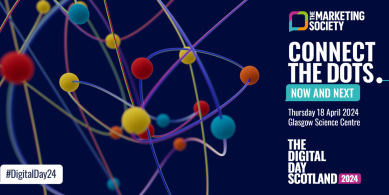A recent Radio 4 presenter described Tim as a "neuroscientist gone rogue" because he now applies his knowledge as a vision scientist to commercial questions around design optimisation and behavioural influence.
In 2011 he co-founded Acuity Intelligence Ltd, which is a neuroscience based research agency and consultancy that specialises in real-world applications of eye-tracking, biometrics and behavioural research.
Tim is speaking at Industry Insights with Food Standards Scotland on Trends in Food Marketing - Feb 22, Edinburgh.
Can you explain the motivations behind launching your company, Acuity Intelligence?
For most of us, vision is the primary sense through which we learn about the world; it shapes our understanding, influences our decisions, guides our actions and triggers our emotions. In short, vision affects almost all our behaviour, and is in turn affected by almost of all a behaviour too. The goal with Acuity Intelligence, which has just been acquired by Tobii, is to educate on the neuroscience of behavioural research, and especially visual decision making, and provide expert research services that apply this knowledge and collect empirical data to help brands and retailers, among others, to optimise their presentation, packaging and layout for the visually driven consumer.
You completed a PhD in visual neuroscience, decision making and aesthetic perception, a study that you still continue to research and teach. Where does the fascination come from?
For me the fascination comes from the way visual information affects our emotions and inevitably our decision making. Right now, we have a pretty good idea about some of the automated processes that drive attention, and so can typically ensure that products are looked at in any environment. The bigger challenge is in sustaining that attention and providing the cues needed to nudge a selection or purchase decision. This is because emotional responses are driven by past experience, making them often quite unique to the individual and, because in most cases these responses are unconscious, traditional methods like questionnaires and focus groups cannot get us to the answers we need. Through a combination of neuroscience-based methods and technologies, together with machine learning algorithms like the one I created in my PhD, we are starting to develop methods that give us insights into those unconscious, or implicit, individual preferences that can be used to drive decision making in the real world and effect behaviour change.
You've worked with some incredible clients. What have been your favourite projects to work on and why?
It sounds a bit trite to say it, but my love for the type of work we do means that my favourite project is often the one I am working on right now! This is because I'm a firm believer in designing research to match the client's specific challenges for the environments they operate in. In this business, context is everything and so every project brings new challenge and offers the potential for new insights. Of course, I have a few pet faves from the past 7 years, so I'll mention a couple. Our work with GSK and the British Brand Group looking at the effect of copycat packaging on unconscious shopper behaviour is a great example of just how much you can learn about decision making from a well-constructed piece of research. As a vision scientist I know that there is often a huge disconnect between what we see and what we perceive, but this project confirmed just how strong these effects can be in a shopper context with a direct impact to a brand's bottom line. That research was conducted in a retail lab, and I always love it when we get out of the labs and onto the streets because I've always been a believer that in order to fully understand real behaviour you have to study it in context. So, another project that I really loved was a massive shopper research project we did for Premier Foods, where we collected eye-tracking data from over 200 shoppers, performing real shops, spending their own money in real stores. Long after we finished that project and delivered our insights back to Premier, we continue to work with them to extract value from this massive dataset to learn about the many factors that influence shopper decisions in the real world.
Tell us about the benefits exploring consumers visual neuroscience can have for marketers.
This question always makes me smile, but that's probably because I know that everything we ever do comes back to the brain, and so why would you look anywhere else to answer questions about emotional responses, preferences, attributions, loyalty and decision making, which are what Marketing is all about. As I've already alluded to, the majority of decisions we make on a daily basis are automated and unconscious. That's not to say we don't have free will, but just maybe not as much as we'd like to believe at the precise time we make the decision. The fact the we are not consciously engaged with the choices we make more than 90% of the time begs the question why we believe asking consumers to report on their reasons for a decision will get us to the correct answer, it simply can't most of the time. Add to this the role that context plays in decision making, and we start to see why so many products, package decisions and marketing campaigns that are based simply on questionnaires and focus groups do not end up delivering the ROI a brand hoped for. By supplementing traditional methods with neuroscience based methods such as eye-tracking, EEG and GSR, we can observe the unconscious responses directly and use these to understand and predict behaviour as well as to improve the insights from self-report based methods by asking more specific questions.
If you could bestow 3 pieces of wisdom to our members, what would they be?
Only 3?! :
These days, everyone talks about the emotional shopper because of the effects emotions have on automated (Daniel Kahneman's System 1) decision making. But products need to be seen to trigger that response in the first place. So it is essential to invest in research which confirms that products/packs will be seen early enough in the design/development process to be able to apply the learnings. All too often it happens just prior to launch when it's too late to do anything about it.
I've already mentioned the important of context of a few times, but this is SO important when it comes to product stand-out and visually driven decision making. The store you're in, the shelf you're product is on, the competing packs around yours are just some of the factors that will change the way your product stands out. It's important to test against worst case scenarios for visibility if you want to optimize your product's standout.
Unconscious decision making can only be understood using unconscious measures, and so it is especially important in fast moving and consumer goods categories to employ neuroscience based measures which do not rely on self-report. This doesn't have to be expensive and these days should be affordable to even start-up brands. Shop around for agencies with experience in the field who will help to develop research which is tailored to your specific needs and not just offer you an off-the-shelf solution, unless, of course, you want your product to stay on the shelf!
Newsletter
Enjoy this? Get more.
Our monthly newsletter, The Edit, curates the very best of our latest content including articles, podcasts, video.
Become a member
Not a member yet?
Now it's time for you and your team to get involved. Get access to world-class events, exclusive publications, professional development, partner discounts and the chance to grow your network.




